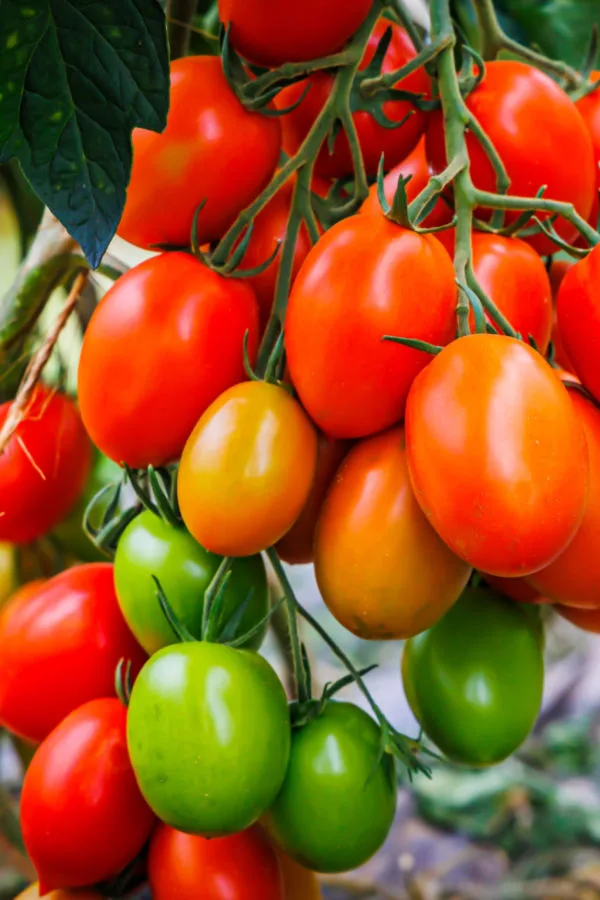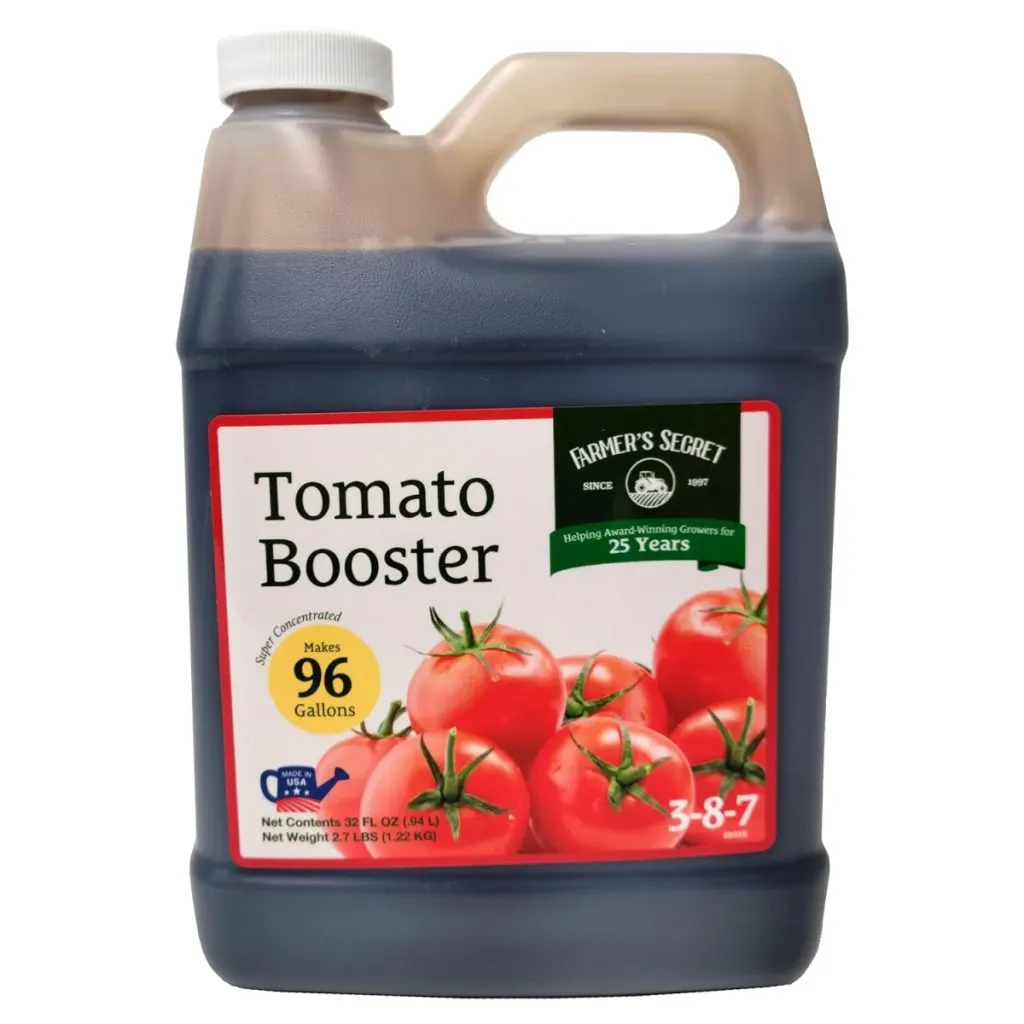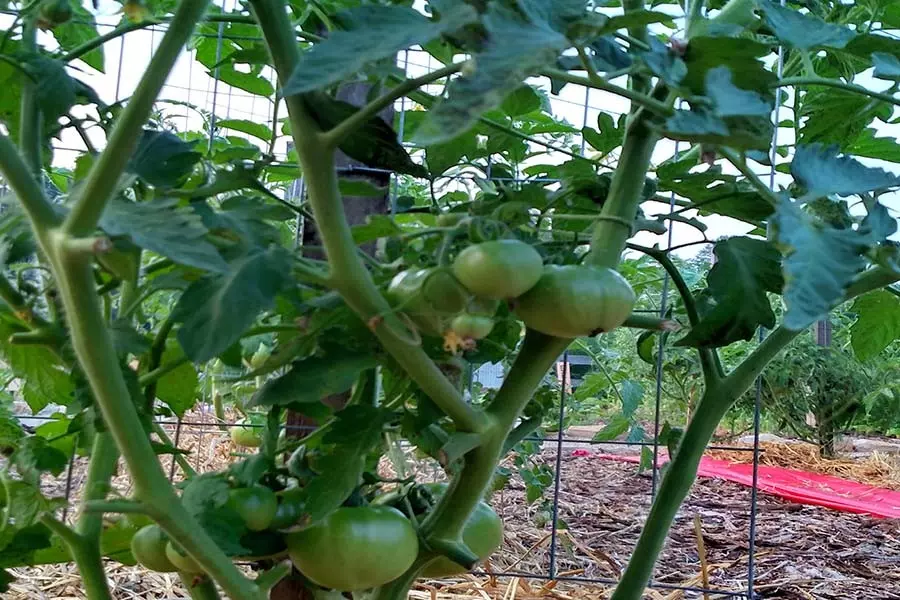Wondering if there is any way to help your tomato plants in late summer as they begin to fade and look a little weak and lethargic?
Let’s face it, by mid to late August, many tomato plants begin to wear out a bit. Not only can the foliage and stems become brittle and weak, the fruit the plants produce can often be heavily scarred and marred.
Late season tomatoes are notorious for suffering from cracking and splitting. As the outer skin cracks open, it can dry out most of the juice from the tomatoes, leaving them tasteless in the process. In addition, those cracks and openings become a haven for pests.

But even though your plants may look like the end is near, it doesn’t have to be their final curtain call. In fact, with a few simple tips and tricks, you can actually help your old plants finish strong. And best of all, provide you and your family with a final flush of fresh tomatoes before the snow starts to fall!
How To Help Tomato Plants In Late Summer
It’s important to know that by mid to late summer, depending on which type of tomato you are growing, your tomatoes may actually be dying off naturally – simply because of the type of tomato you are growing.
There are actually two varieties of tomato plants – determinate and indeterminate. Indeterminate tomatoes, if healthy, will grow until a hard frost or freeze kills them. They also will continue producing blooms and tomatoes right up until the cold kills them off.
But if you happen to be growing a determinate tomato variety, its life span will not last through the fall. Determinate tomatoes grow and then produce their crop nearly all at once. And after they do, they will die off completely. This usually happens mid to late summer.
Unfortunately, this often leads to a lot of confusion for gardeners. Many popular tomato plants, such as Roma are determinate varieties. And gardeners who grow these types often think their plants must be suffering from a lack of water, nutrients or blight as they begin to die off in late summer.

If you are growing a determinate tomato plant, nothing will help them survive past mid to late summer. It’s simply their time. But for indeterminates, with just a bit of extra care, you can revive them and keep them producing well into late fall!
Reviving Indeterminate Tomato Plants – How To Help Tomato Plants In Late Summer
The first step to helping late season tomato plants starts with picking your plants’ tomatoes earlier than ever.
One of the biggest issues for tomato plants by mid to late summer is that they are simply carrying too much fruit on their vines. And when they do, it leads to all sorts of issues for the plant – and the tomatoes.
When plants are overloaded with fruit, they simply don’t have enough power to ripen the existing fruit, or produce blossoms for more. This issue is known as fruit overload, and it can happen to nearly all vegetable plants. But by picking the plants more often and leaving way less fruit on the vines, it can really help rejuvenate late summer tomato plants!

Ripening Tomatoes Off The Vine – How To Help Tomato Plants In Late Summer
The good news is, tomatoes actually ripen off the vine better than they do on it. Once a tomato turns blush or slightly red, pick it. By placing it in a cool area out of the sunlight, it will ripen off the vine quite well. Not only does this help the plant, but the tomato has far less ability to crack and split. See our article: How To Ripen Tomatoes Off The Vine – And Why It’s Better Than Leaving Them On!
If you want your plants to keep producing, picking them as early as you can is vital. In addition, as the summer progresses, allow far fewer tomatoes to hang on the plant. Don’t be afraid to even remove a few green ones as well to keep it less crowded. As the old saying goes, it is better to get something rather than nothing at all!
Fertilizing Late Season Plants – How To Help Tomato Plants In Late Summer
By mid-summer, tomato plants have often depleted the soil of most of its nutritional value. But with a little fertilizing, you can provide them with enough power to keep on going – right up until that first frost!
The key with late season fertilizing is to provide a boost of energy that is solely designed to help it in the production of tomatoes – and not just growing.
This means fertilizing with a fertilizer that is higher in phosphorous and potassium than nitrogen. Affiliate Product Link: Tomato Booster Fertilizer (32oz) – Super Concentrated – 3:8:7 Ratio Fortified with Humic Acid, Iron and Calcium

It’s important to use liquid fertilizer at this point solely for speed. Liquid fertilizer acts fast, absorbing through both the roots and foliage. At this point, plants don’t have enough time left to truly benefit from granular fertilizers before the season ends.
Prune & Mulch – How To Help Tomato Plants In Late Summer
If you have not been pruning and mulching your plants to this point – now is definitely the time to do it! Prune up under plants to remove all of the bottom foliage at least 12″ to 18″.
This will help provide circulation to plants and conserve the plant’s resources. This also happens to be one of the best ways to ward off late season blight. In addition, always prune off any damaged limbs or stems, and be sure to remove any foliage that is browning off in large quantities.
Mulching is key now as well. Not just for weed control but to help regulate the soil temperature and conserve moisture. Even if you are already mulching, now is a great time to add more.
Plants should have a minimum of 4 to 6 inches of mulch around them. Straw, shredded leaves or grass clippings are all excellent choices for mulch. In the hot summer sun, mulch provides incredible protection for the plants. Without it, plants can easily wither away.

Picking New Blossoms Late In The Season – How To Help Tomato Plants In Late Summer
Last but not least, as your plants enter their final month, it’s time to start removing any and all remaining blossoms. By late September, (or earlier in areas locations with early winters) plants do not have enough time to take a new blossom to a viable fruit stage.
By removing the new blossoms, you allow the plant to concentrate its resources on growing the remaining immature fruit to size before the first frost hits.
Finally, once that first frost hits – pull those tomato plants quickly and get that cover crop in! Allowing tomato plants to wither away in the garden is asking for pests and disease to take hold. For more tips on growing great tomatoes, check out our article: The Best Way To Ripen Tomatoes – And It’s Not On The Vine! Here is to getting the most from tomato plants in late summer! Happy Gardening – Jim and Mary
Old World Garden
Jim and Mary Competti have been writing gardening, DIY and recipe articles and books for over 15 years from their 46 acre Ohio farm. The two are frequent speakers on all things gardening and love to travel in their spare time.
As always, feel free to email us at thefarm@owgarden.com with comments, questions, or to simply say hello! You can sign up for our free email list in the subscribe now box in the middle of this article. Follow us on Facebook here : OWG Facebook. This article may contain affiliate links.
